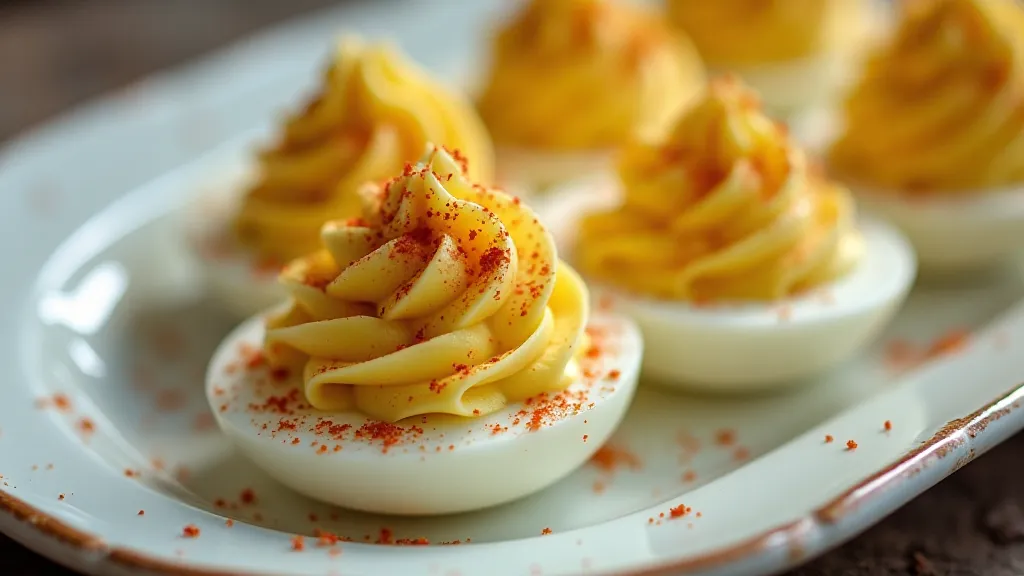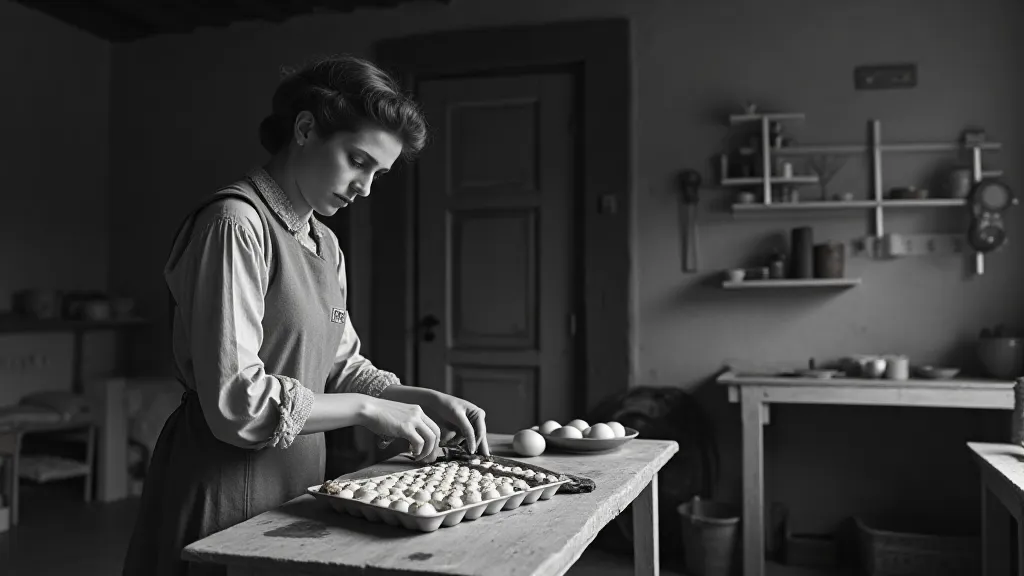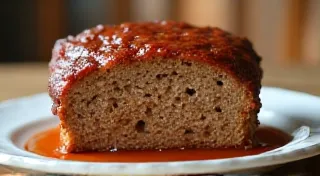Deviled Eggs: A Budget-Friendly Appetizer
During the Great Depression, families stretched every penny and relied on resourcefulness in the kitchen. Food was scarce, and creativity was key to creating filling and satisfying meals – and appetizers! Among the many dishes that rose to popularity during this era, deviled eggs became a beloved staple. Their enduring appeal lies not only in their delicious flavor but also in their incredible affordability, making them a true embodiment of Depression-era cooking.
Why Deviled Eggs Became a Depression-Era Favorite
The beauty of deviled eggs lies in their simplicity. Eggs were relatively inexpensive, especially when bought in bulk. Mayonnaise, while not always readily available in abundance, could be made at home using readily available oil and vinegar, reducing costs even further. The few other ingredients – mustard, a pinch of paprika – were common pantry items. Essentially, deviled eggs were a way to make a small amount of protein go a long way, feeding more people without breaking the bank. This resourceful approach extended to other dishes as well; families were constantly seeking ways to maximize ingredients, much like how resourceful cooks crafted meals like meatloaf, cleverly stretching ground meat with fillers to feed larger families.
Beyond the economic benefits, deviled eggs were versatile. They could be served as an appetizer at gatherings, a light snack, or even as part of a larger meal. Their relatively mild flavor also made them appealing to a wide range of palates, which was important when feeding families struggling with limited resources. The ingenuity wasn’s just limited to eggs, however; resourceful cooks explored a variety of inexpensive ingredients, even creating surprisingly savory dishes like creamed chipped beef from humble cuts of beef.

The Classic Great Depression Deviled Egg Recipe
While variations existed from family to family, the core recipe remained remarkably consistent. Here's a basic version that reflects the authentic methods used during the 1930s:
Ingredients:
- 6 Large Eggs
- 3 Tablespoons Mayonnaise (or homemade mayonnaise)
- 1 Teaspoon Yellow Mustard
- 1/4 Teaspoon Paprika
- Pinch of Salt
- Pinch of Black Pepper
- (Optional) Few drops of Vinegar for extra tang
Instructions:
- Place eggs in a saucepan and cover with cold water. Bring to a boil, then remove from heat, cover, and let sit for 12 minutes.
- Immediately drain the hot water and rinse the eggs under cold water until they are cool enough to handle.
- Carefully peel the eggs.
- Cut the eggs in half lengthwise.
- Gently remove the yolks and place them in a small bowl.
- Mash the yolks with a fork until smooth.
- Add the mayonnaise, mustard, salt, pepper, and vinegar (if using) to the mashed yolks. Mix well until creamy.
- Spoon or pipe the yolk mixture back into the egg white halves.
- Sprinkle with paprika.
- Chill for at least 15 minutes before serving.
Homemade Mayonnaise Tip: If you’re feeling ambitious and truly want to recreate the Depression-era experience, try making your own mayonnaise. There are many simple recipes available online using just oil, vinegar, and an egg yolk!

Beyond Eggs: The Resourceful Pantry of the Depression Era
The Depression-era kitchen wasn't solely defined by deviled eggs, but rather by a spirit of ingenuity. Families were masters of minimizing waste and maximizing every ingredient. Leftover broth, for example, became the base for nourishing soups, and even humble vegetables were transformed into surprisingly satisfying meals. This resourcefulness extended to grains and starches, which were often the foundation of a family’s diet.
Soups, in particular, were a staple. They were affordable, filling, and could incorporate whatever vegetables or scraps were available. Many recipes stretched a little meat – when available – with potatoes, carrots, and celery. One particularly memorable soup, known as Hoover stew, became a symbol of the era's economic hardship, named after President Herbert Hoover. Its ingredients were deliberately simple and inexpensive, reflecting the limitations many families faced.
The Enduring Legacy of Depression-Era Cooking
Deviled eggs, like so many other dishes from the Great Depression, represent a time of hardship and innovation. They are a testament to the ingenuity and resourcefulness of families who faced incredible challenges. The dishes crafted during this period weren’t about extravagance; they were about survival and connection. Every ingredient was precious, and every meal was a testament to the strength and resilience of the human spirit.
The principles of Depression-era cooking – minimizing waste, maximizing flavor, and using readily available ingredients – remain remarkably relevant today. As we grapple with rising food prices and concerns about sustainability, the lessons of the past can provide valuable guidance.
While times have changed, the appeal of a simple, affordable, and delicious appetizer like deviled eggs remains strong. They serve as a delicious reminder of a bygone era, connecting us to the past and honoring the families who persevered through difficult times. The focus on simple ingredients and flavors transcends generations, reminding us that satisfying meals don’t require a long list of ingredients or complex techniques.






